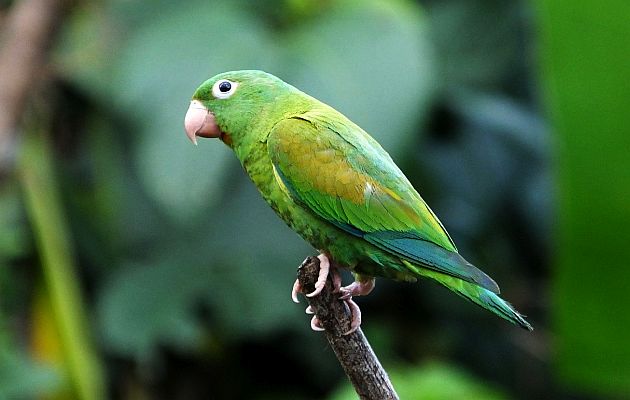
Costa Rica is a country situated well south of the Tropic of Cancer and like most places without a winter, parrots are an essential part of the local avifauna. With 18 species of native Psittacids to choose from, birding in Costa Rica is always a thrill, especially for someone who grew up in parrotless Niagara Falls, New York!
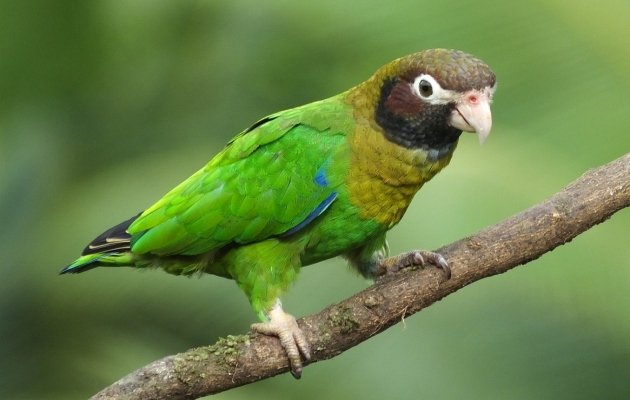
Fancy bird like this Brown-hooded Parrot are common in many forested parts of the country.
I even see a few species of parrots and parakeets from my place, an apartment in the urban landscape of the Central Valley Without leaving the seat of my chair, I hear and see four species of parrots and parakeets that fly to and from roosting sites, birds that wander in search of fruiting trees in the farmlands and patches of forest just outside of town. At least one of these species has adapted to nesting on buildings and a few others can nest in large parks. These are the species that call or fly within my sphere of birding nearly every day:
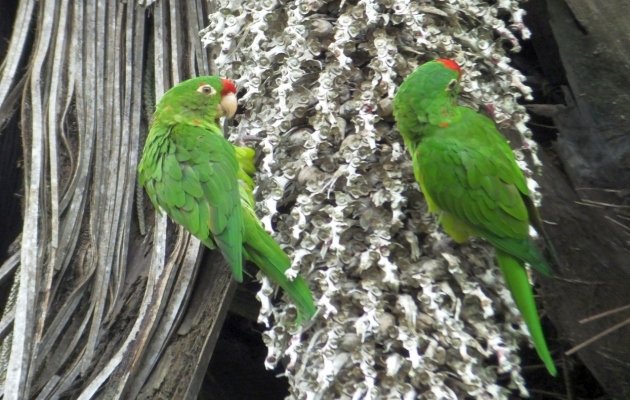
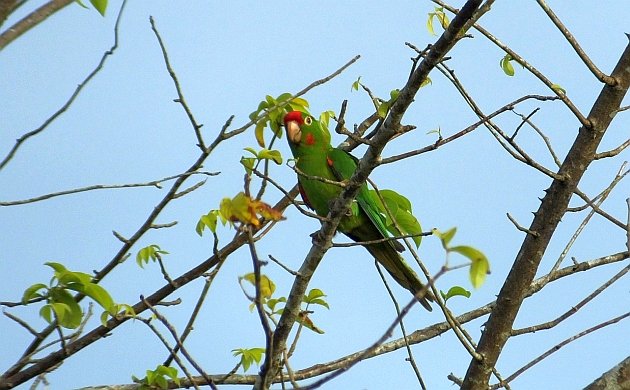
The most common urban parakeet, this is the one that has become adapted to nesting on buildings, including the center of San Jose. They roam in screeching flocks to visit remnant patches of habitats throughout the valley and can be identified by their combination of a long tail, red front, and red on the underwings.
Orange-chinned Parakeet
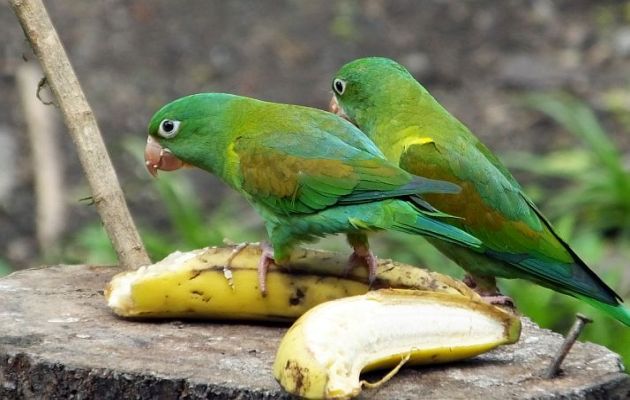

Nearly as frequent as the Crimson-fronted, this species chatters from tall trees in parks and riparian zones, even from sites next to busy roads. It can be identified by its small size and short pointed tail.
White-crowned Parrot
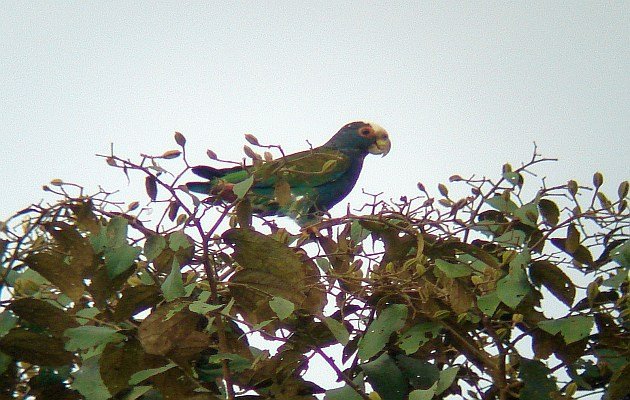
Like 99% of parrots, this is a colorful bird with a loud voice. I usually hear a few as they fly high overhead, heading to destinations unknown (possible theme song for this bird, many rails, and vagrants). Large numbers can occur in green space just outside of the greater metropolitan area especially where there are guava and other fruiting trees. This is the only parrot in the Central Valley with a short tail, white crown, and bat-like flight whereby the wings are flapped below the plane of the body.
White-fronted Parrot
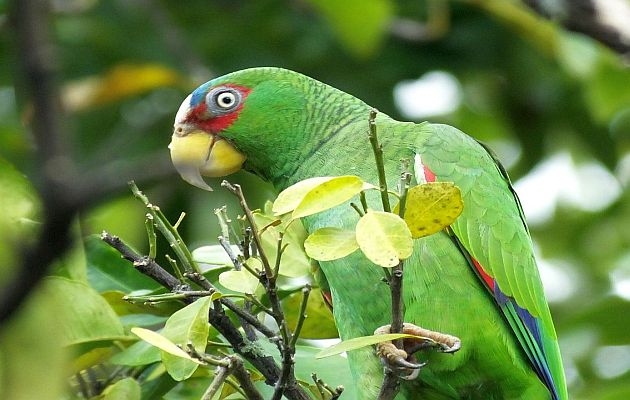
The other regular parrot around here is this species. A common bird of dry forest habitats, as the climate has become warmer and drier, it seems to have taken up residence in parts of the Central Valley. I see and hear a small flock of these small Amazons on a daily basis. They seem to be particularly interested in a group of large trees in a nearby coffee farm.
This species is identified by its pale green plumage with white front, red in shoulders of wings, and yellowish bill.
Bird Costa Rica and you have a pretty good chance of seeing these common parrots and parakeets. You might see most of them in flight but on account of their loud, social behavior, at least they tend to be more obvious than other birds.
In other part of the country, additional species of parrots are regular, neighborhood birds. Incredibly, during a recent visit to the Caribbean lowlands, we had close looks at a group of Great Green Macaws in a neighborhood of a small town! Small numbers of this endangered species wander in the Caribbean lowlands and foothills in search of seeding “Mountain Almond” and other trees.
They also occasionally feed on Beach Almond and this is what 10 of them were doing in the town of Santa Rosa.

It was surreal to watch these endangered birds feeding on an urban street, spectacular birds that feature high on the wanted list of every visiting birder.
The only downside to that sighting was finding out that the neighbors across the street want to cut down that Beach Almond.
They don’t like the leaves and detritus that gathers below the tree. Since these are the same neighbors who illegally cut down several other trees (habitat that was used by wintering warblers), it appears that they also suffer from the all too prevalent affliction of environmental disconnect that has been steadily bringing our Planet to the edge of biome collapse. I hope that they don’t follow through on those wishes and can also be cured via a dosis of education and knowledge that results in eventual appreciation. At least the tree is not found on their property and this probably gives it some protection.
In the meantime, hopefully, more trees can be protected and planted in Santa Rosa, our neighborhood and elsewhere in Costa Rica to ensure that parrots, parakeets, and macaws continue to be regular backyard birds. I will keep on being amazed by and grateful for these everyday fancy birds.












Fresh waves of jealousy are coming over me, Patrick. The only parrots to be found in the highlands of Michoacán are urban escapees, and there aren’t many of those. We have parrots nearer the coast, but I haven’t gotten lucky with them yet. I have seen White-fronted Parrots in 3 other Mexican states, though, and a couple of other species in Chiapas, on the Guatemala border. Having them turn up at my home is just a dream!
@Paul- I hope some find their way to your place.
Great photos! Good luck Beach Almond Tree. Thank you, Patrick.
What a colourful post 🙂